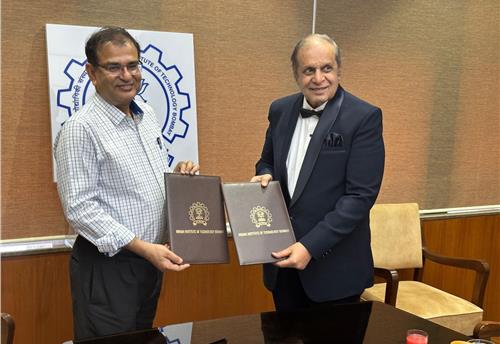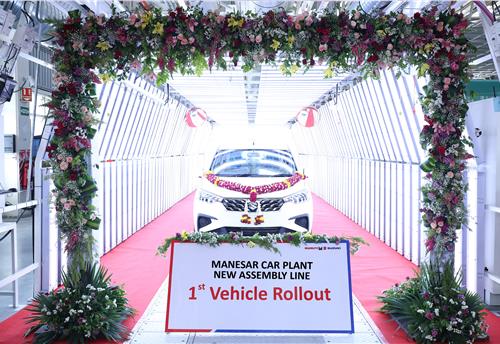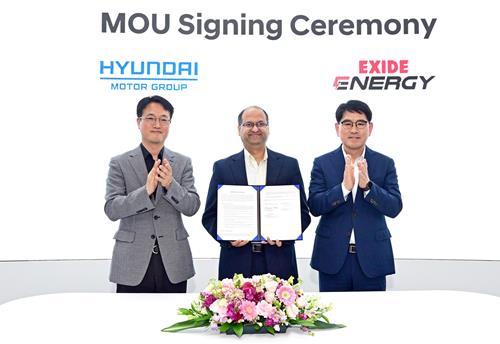Eyes wide shut
The 11th Auto Expo turned out to be sadly short on real commercial vehicle stories. Except for the buses, the abject lack of true vision on display was appalling.
The 4928 semitrailer tractor made too brief an appearance before it disappeared backstage to allow close examination. We wanted to know whether this was the 6×2 variant Daimler will launch in the last quarter of 2013, but the response from corporate communications head Florian Laudan later was non-committal.
The company is the only Indian OEM known to have a 6×2 tractor in its portfolio, and it will very likely be the first to hit the roads with one sometime in the last quarter of 2013. Apart from a big fuel-efficiency advantage of driving just one rear axle rather than two as in a 6×4, there are also savings on weight, cost, and consumables.
Managing director and CEO Marc Llistosella has long talked up “his” trucks and boasted of their superior performance against benchmarked competitors. What the assembled media at the press preview failed to realise was that the truck on display could very well be the proof of the pudding.
If you were looking for evidence of progressive thinking in a vastly unimaginative commercial vehicle industry, this was it. Not the 37-tonne rigid trucks that India’s number one and number two displayed at the Expo, which can only be described as retrogressive at best — trucks that clearly represent an attempt to milk the market rather than move it in the direction of greater transport efficiency.
The five-axle rigid trucks on display from Tata Motors and Ashok Leyland have no manifest operating-economics advantages compared to the articulated trucks that many forward-thinking fleetowners are already moving to in growing numbers while the OEMs continue to hang back.
If anything, all they seem to be wanting to do is lock the operator into a 25–27-tonne payload capacity with trucks that are not only more expensive to purchase but also, given the greater kerb weight and lower fuel efficiency (than 25 tonne trucks), less profitable to operate even fully loaded on every haul. However, a reality check looms imminent. The convergence of three crucial factors – the introduction of GST in 2013, permission for FDI in multibrand retail, and the Code of Practice for trailer construction that recommends the “divorce” of tractor from trailer in the matter of registration – will pitch the industry onto a path it has invariably trodden in the “West” and one it is following in all the rest of the developing world.
There’ll soon be a day when Indian OEMs will no longer be able to “con” – as one observer bluntly put it – fleetowners by selling them on increased inflexibility and lower transport performance in the guise of lower cost per tonne-km. If they are wise, our fat cats will watch Daimler very carefully. And learn.
Back to Daimler, and the BharatBenz HDT — the cab still has the shape of the Mercedes Axor’s, but the styling is so different that it’s difficult to imagine the Axor beneath the skin. For the media, suppliers, dealers, and above all prospective customers, who are itching to touch and feel a product whose story the company has only revealed to them in bits and snatches, the OEM has planned its own Expo at the Hyderabad International Convention Centre from March 2 through 7.
Invitees to this exclusive show will have the chance to “deep dive” into the BharatBenz product world, with workshops explaining the thinking that went into the trucks’ design and hands-on drives (or rides, depending) of the full range. The company is determined to set benchmarks in everything it does, and the brand experience will be no different.
On April 18 the inauguration of the Oragadam plant will follow. At a ceremony attended by top Daimler officials and all the employees, the project team will officially hand the plant over to the operations team. The idea behind the two events is to first show the company’s “partners” the products, and then where they come from, Laudan said.
Returning to the Auto Expo, the breadth of vision at axle supplier Meritor was in stark contrast to the abject lack thereof in the OEMs. The small stall had little in it to reflect the global – and now Indian – leadership the company commands as an independent supplier of heavy duty axles.
With only a cutaway hub-reduction tandem, a nondescript light axle, and an ANG trailer axle hidden almost apologetically in a passage at the rear, you’d be forgiven for wondering why it was generally so crowded. But from the drive axle end-caps on almost every truck (except Tata and the DAF) and bus, no matter which OEM’s, it was clear that Meritor was here in force.
Its 1495 and 1497 axles were on the two new CLA trucks and the 1496 on the Airobus from MAN, the 17X/177 on all the Volvo buses on display, besides Tata’s Marcopolo Paradiso coach, and the 1495 tandem on Ashok Leyland’s 3723. In addition, two out of five trucks at the Mahindra Navistar stand had Meritor axles, and all but two of the AMW exhibits.
But most significant of all, perhaps, is the MS-04 axle with a load rating of 3.5–5 tonnes for light commercial vehicles on Ashok Leyland’s Partner light truck based on the Nissan Atlas. Designed and developed entirely in India at Meritor’s tech centre in Bangalore, this is the smallest axle Meritor has built anywhere in a century.
With a lot of product innovation taking place currently in the 5–7.5 tonne LCV segment, in which Tata’s 407 series alone accounts for 30,000 of the overall sales of 70,000-odd, Meritor believes it has found its next big market. Not only in India, but worldwide.
With the Ashok Leyland Partner, Meritor has succeeded in breaking into the LCV market at first go, displacing an AdvanTek design from Dana in Ashok Leyland’s Partner light truck based on Nissan’s Atlas. And it seriously fancies its chances with Tata for its new generation of light and mediumweight trucks like the 714 and 1017 on display at the show.
Moreover, it’s already started to take the axle worldwide, having quoted for a new global programme by an European OEM that sees big volumes for its new LCV series, especially in China, where these axles could eventually also be built, a source told this correspondent.
RELATED ARTICLES
IIT Bombay inaugurates Arun Firodia Research Floor
IIT Bombay, one of India’s top technical and research institutions, honours Kinetic Group chairman Dr Arun Firodia, one ...
Maruti Suzuki expands capacity at Manesar plant by additional 100,000 units
New assembly line at Plant A expands total manufacturing capacity at the Manesar plants to 900,000 units per annum. Alon...
Hyundai and Kia partner Exide Energy to produce LFP batteries in India
Partnership with Exide Energy enables Hyundai Motor and Kia to equip future EVs in the Indian market with locally produc...





 By Autocar Pro News Desk
By Autocar Pro News Desk
 17 Jan 2012
17 Jan 2012
 3559 Views
3559 Views









